
The Royal London Hospital is a large teaching hospital in Whitechapel in the London Borough of Tower Hamlets. It is part of Barts Health NHS Trust. It provides district general hospital services for the City of London and Tower Hamlets and specialist tertiary care services for patients from across London and elsewhere. The current hospital building has 845 beds and 34 wards. It opened in February 2012.

The Royal Prince Alfred Hospital is a large teaching hospital in Sydney, Australia, located on Missenden Road in Camperdown. It is a teaching hospital of the Central Clinical School of the Sydney Medical School at the University of Sydney and is situated in proximity to the Blackburn Building of the university's main campus. RPAH is the largest hospital in the Sydney Local Health District, with approximately 1200 beds. Following a $350 million redevelopment, the perinatal hospital King George V Memorial Hospital has been incorporated into it.

The Royal College of Nursing (RCN) is a registered trade union and professional body in the United Kingdom for those in the profession of nursing. It was founded in 1916 as the College of Nursing, receiving its royal charter in 1928. Queen Elizabeth II was the patron until her death in 2022, King Charles III continued the royal connection and became patron in 2024. The majority of members are registered nurses; however student nurses and healthcare assistants are also members. There is also a category of membership, at a reduced cost, for retired people.

James Francis Pantridge, was a Northern Irish physician, cardiologist, and professor who transformed emergency medicine and paramedic services with the invention of the portable defibrillator.
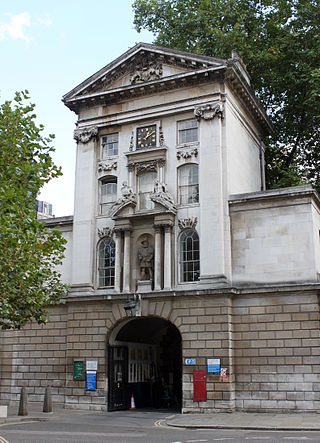
St Bartholomew's Hospital, commonly known as Barts, is a teaching hospital located in the City of London. It was founded in 1123 by Rahere, and is currently run by Barts Health NHS Trust.
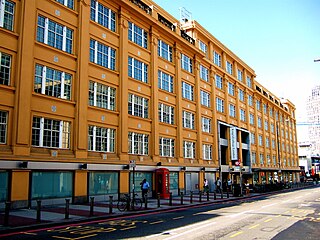
The Florence Nightingale Faculty of Nursing, Midwifery & Palliative Care is an academic faculty within King's College London. The faculty is the world's first nursing school to be continuously connected to a fully serving hospital and medical school. Established on 9 July 1860 by Florence Nightingale, the founder of modern nursing, it was a model for many similar training schools through the UK, Commonwealth and other countries for the latter half of the 19th century. It is primarily concerned with the education of people to become nurses and midwives. It also carries out nursing research, continuing professional development and postgraduate programmes. The Faculty forms part of the Waterloo campus on the South Bank of the River Thames and is now one of the largest faculties in the university.

Matron is the job title of a very senior or the chief nurse in several countries, including the United Kingdom, and other Commonwealth countries and former colonies.

The Bristol Royal Infirmary, also known as the BRI, is a large teaching hospital in the centre of Bristol, England. It has links with the nearby University of Bristol and the Faculty of Health and Social Care at the University of the West of England, also in Bristol.
Health and Social Care (HSC) is the publicly funded healthcare system in Northern Ireland. Although having been created separately to the National Health Service (NHS), it is nonetheless considered a part of the overall national health service in the United Kingdom. The Northern Ireland Executive through its Department of Health is responsible for its funding, while the Public Health Agency is the executive agency responsible for the provision of public health and social care services across Northern Ireland. It is free of charge to all citizens of Northern Ireland and the rest of the United Kingdom.

Cardiff Royal Infirmary is a hospital in central Cardiff, Wales. It is managed by the Cardiff and Vale University Health Board.
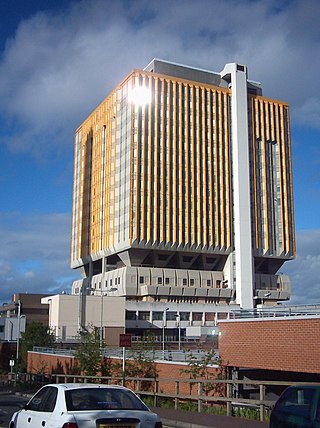
The Belfast City Hospital in Belfast, Northern Ireland, is a 900-bed modern university teaching hospital providing local acute services and key regional specialities. Its distinctive orange tower block dominates the Belfast skyline being the third tallest habitable storeyed building in Northern Ireland. It has a focus on the development of regional cancer and renal services. It is managed by Belfast Health and Social Care Trust and is the largest general hospital in the United Kingdom. In April 2020, due to the global coronavirus pandemic, the tower block was designated one of the UK's Nightingale Hospitals.

The Royal Belfast Hospital for Sick Children is a specialised government children's hospital and medical centre in Belfast, Northern Ireland. It is managed by the Belfast Health and Social Care Trust and is the only hospital in Northern Ireland dedicated to children.

The Hospital of St. Cross is a National Health Service hospital on Barby Road, in Rugby, Warwickshire, England, managed by the University Hospitals Coventry and Warwickshire NHS Trust. It is on the south edge of Rugby above a steep slope running down to the Sow Brook valley.
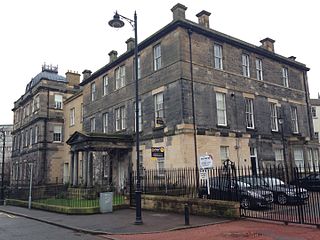
Leith Hospital was situated on Mill Lane in Leith, Edinburgh, and was a general hospital with adult medical and surgical wards, paediatric medical and surgical wards, a casualty department and a wide range of out-patient services. It closed in 1987.

Salford Royal Hospital is a large university teaching hospital in Pendleton, Salford, England operated by Northern Care Alliance NHS Foundation Trust. It was previously one of the top-performing hospitals in the United Kingdom.
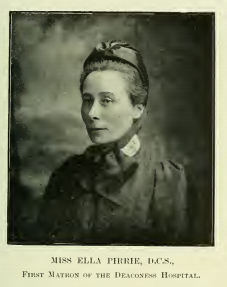
Isabella Barbour Pirrie, DCS (1857–1929), was the first nurse in the Belfast Union Workhouse Infirmary, establishing a nursing school there. She went on to become the first matron at the Deaconess Hospital, Edinburgh, established by Archibald Charteris as a training school for nurses.

The Miller General Hospital was a hospital in Greenwich, London from 1884 until 1974. It was developed adjacent to an earlier dispensary, and was the first British hospital designed with circular wards, and one of the first to have an X-ray department.
Florence Eileen Elliott OBE was a Northern Irish nurse who has been described as "one of the most outstanding nurses that Northern Ireland has produced". She was awarded an OBE in 1951.
Mary Baird, MBE was a Northern Irish nurse and health service administrator, working as Northern Ireland's first health visitor.
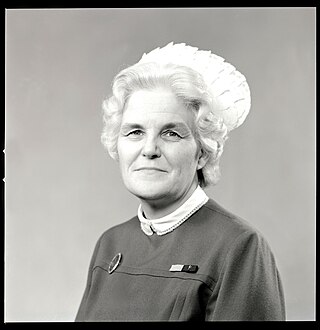
Mary Kathleen Robb, OBE, OStJ, FRCN, was a nurse from Northern Ireland. Robb was the last matron of the Royal Victoria Hospital in Belfast and steered nursing services across the city during the height of The Troubles. Robb was an advocate for the Royal College of Nursing (RCN) and was a board member for 20 years.






















